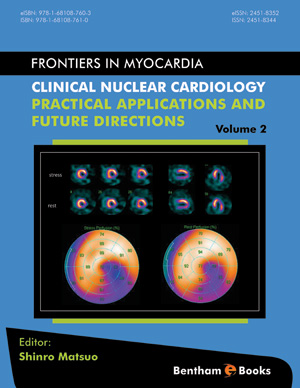Abstract
A heart is controlled by sympathetic and parasympathetic nerve system. The synapse mediator of sympathetic nerve ending is norepinephrine, and the mediator of parasympathetic nerve ending is acetylcholine. In the case of heart failure, infarction or various heart diseases, the abnormality of cardiac sympathetic nerve appears. Iodine- 123 metaiodobenzylguanidine (123I-MIBG) is widely used for radiopharmaceutical in the world. 123I-MIBG is proven as a specific radiolabeled tracer of sympathetic innervation heart because of high accumulation ratio compared with normal sympathetic nerve heart. The material is taken up in a sympathetic nerve ending and stored in synapse granular vesicles like uptake-mechanism of norepinephrine. Cardiovascular diseases have a relation with activity of the sympathetic cardiac nerves. To evaluate cardiac sympathetic activity, 123I-MIBG scintigraphy is commonly used. 123I-MIBG scintigraphy is performed at 10 to 15 minutes (early image) and 3 to 4 hours (delayed image) after intravenous injection. Cardiac 123I-MIBG uptake is commonly assessed by viewing the planar images. 123I-MIBG SPECT has been used to evaluate regional denervation and for better quantification of the size and severity of innervation abnormalities. Therefore, 123I-MIBG scintigraphy is very useful and widely available nuclear imaging method for assessing myocardial sympathetic innervation.
Keywords: Coronary artery disease, Heart-to-mediastinum ratio, Iodine-123 metaiodobenzylguanidine.






















